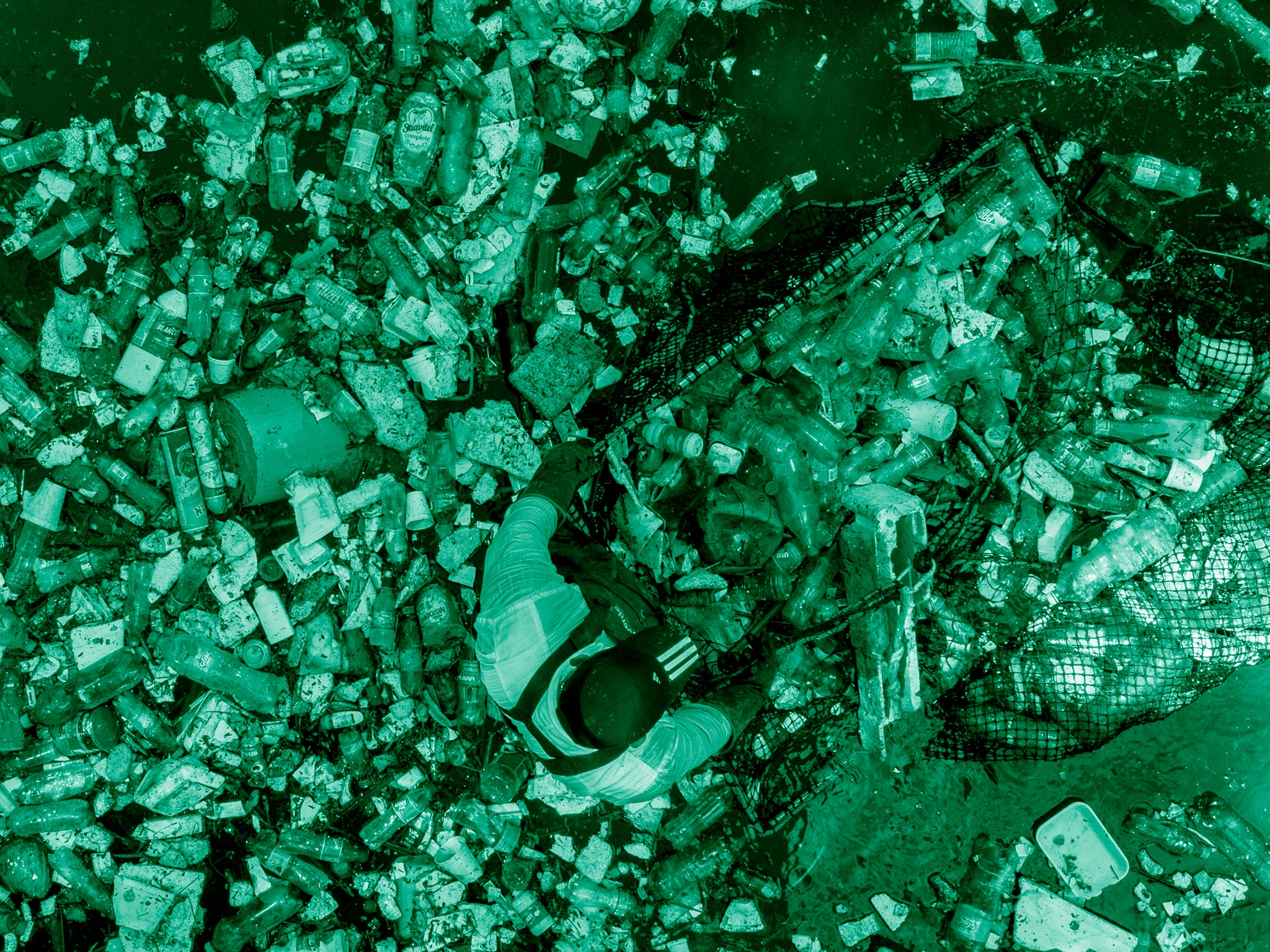Why is there so much plastic in the ocean?

Your support helps us to tell the story
From reproductive rights to climate change to Big Tech, The Independent is on the ground when the story is developing. Whether it's investigating the financials of Elon Musk's pro-Trump PAC or producing our latest documentary, 'The A Word', which shines a light on the American women fighting for reproductive rights, we know how important it is to parse out the facts from the messaging.
At such a critical moment in US history, we need reporters on the ground. Your donation allows us to keep sending journalists to speak to both sides of the story.
The Independent is trusted by Americans across the entire political spectrum. And unlike many other quality news outlets, we choose not to lock Americans out of our reporting and analysis with paywalls. We believe quality journalism should be available to everyone, paid for by those who can afford it.
Your support makes all the difference.The planet is drowning in plastic pollution. Plastic has been found at the bottom of the world’s deepest ocean trench and lodged deep in Arctic sea ice.
During the 1990s, the world became addicted to single-use, disposable plastic, because it was cheap, easy to produce and durable.
Today we produce around 300 million tonnes of plastic waste every year, and at least 10 million tonnes ends up in our oceans. That is the equivalent of a rubbish truck load every minute.
This problem will only get worse in the coming decades as plastic production is expected to increase by 60 per cent by 2030 and triple by 2050. By then, there could be more plastic than fish in the ocean, according to the Ellen MacArthur Foundation.
Once it has been deposited in the ocean, plastic can remain there for centuries because it decomposes very slowly. Plastic is already having a devastating impact on marine life and it has entered the food chain.
What is the main source of marine plastic waste?
Most of the plastic waste in the ocean comes from land. Food packaging, plastic bags and commercial rubbish in landfill sites is blown into rivers and sewers, which flow out to sea. Around 80 per cent of plastic is carried out to sea by more than 1,000 rivers.
Our clothes and cosmetics also release large numbers of microplastics – particles which are smaller than five millimetres.
One load of laundry could release an average of 700,000 microplastic fibres. Less than a millimetre in length, these fibres make their way into rivers and oceans, where they are eaten by fish.
Car tyres are also made of microplastics which are released onto the road and into the air during driving.
These microplastics have been found embedded deep in sea ice in Antarctica and the Arctic.
Around 20 per cent of plastic waste comes from human activities at sea. Most of this is from commercial fishing. A 2019 Greenpeace report found that every year 640,000 tonnes of plastic fishing gear is abandoned, lost or discarded at sea – the equivalent of 50,000 double-decker buses filled with plastic.
Plastic floating on the sea surface only accounts for 1 per cent of all ocean plastic, according to researchers from the Santa Barbara Marine Conservancy. Another study has shown that a large number of microplastics are absorbed by the sea floor, but it remains unknown where all plastic ends up in the ocean.
How does plastic impact marine life?
According to the United Nations, at least 800 species worldwide are affected by marine debris, and as much as 80 per cent of this debris is plastic.
Plastic harms all types of marine life, from tiny organisms to whales, the world’s largest mammals.
“The effects range from harming the smallest zooplankton to the largest marine organisms through ingestion and the transfer of trace metals, persistent organic pollutants and other long-lived harmful chemicals, which are taken up by the plastic particles,” Edward Carpenter, a marine biologist at San Francisco State University, told The Independent.
Fish, seabirds, turtles and marine mammals can become entangled in this plastic waste. Many ingest the plastic debris, which leads to suffocation, drowning or starvation.
A 2018 study found that turtles that ingest 14 pieces of plastic have an increased risk of death.
Scientists say that almost 60 per cent of all seabird species have plastic in their gut. They predict that this figure will rise to 99 per cent by 2050.
Microplastics are also ingested by marine species. In a 2020 study, scientists said they had found 54 microplastics in the digestive tracts of 125 fish in the East China Sea. Microplastics have been shown to reduce the growth and reproduction rates of zooplankton, a type of microorganism that feeds on algae in the ocean.
Why is plastic in the food chain so bad?
Because plastic is ingested by so much marine life, it easily enters the food chain and is consumed by people when they eat fish or seafood. Plastics tend to absorb other environmental toxins which are then ingested by marine species and make their way into our diets.
Globally, people are consuming an average of 5 grams of microplastics every week, the equivalent of a credit card, according to a 2019 study by the World Wildlife Fund. In Shanghai, people inhale an estimated 21 particles of microplastics daily.
Exposure to chemicals used in plastic has been linked to low sperm counts, early miscarriage and gestational diabetesduring pregnancy. The chemical diethylhexyl phthalate (DEHP), which is found in food packaging and other types of plastic, is a toxic carcinogen.
Join our commenting forum
Join thought-provoking conversations, follow other Independent readers and see their replies
Comments